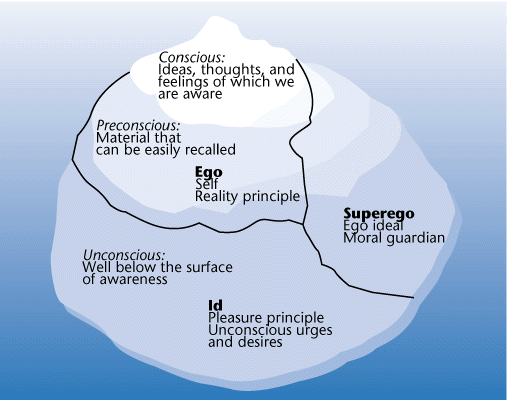
His response in a letter of June 5, 1917, was critical: "The notion of the Ucs requires no extension." The Ucs (unconscious) system was adequate for dealing with organic illnesses, for it influenced somatic processes.

And of course Groddeck had been reading Freud in the 1913-1917 period.įreud first encountered the notion of the id in Groddeck's letter. Groddeck borrowed the term from the Berlin physician Ernst Schweninger, who had written, "The id cures." The idea of an energetic monism was in any case a commonplace of the German culture of the time. Georg Groddeck used this term to refer to the universal unconscious agency -as force and as substance -that he considered to be his interlocutor and object of study when he treated patients suffering from somatic illnesses: "There is something common to the body and the soul there is an Id in them, a force by which we are lived, even as we believe we are living ourselves" (Groddeck to Freud, May 27, 1917). Consequently, an idea designated " das Es " is liable to be indefinite and impersonal, universal, diverse, ambiguous and equivocal, even contradictory. Syntactically, es may be the subject or object of transitive verbs. Thus es may be interpreted as any neuter noun in German and is also used, like the English "it," in many From the standpoint of linguistics, es presents problems at the border between semantics and the syntax of anaphora: in order to understand what it signifies one must refer to another part of the discourse that interprets it. Its use as a noun, with an initial capital - das Es -is perfectly regular. In German, es is the neuter personal pronoun. The written text can thus be as simple or complex as the author’s thinking process.Linked with the ego and the superego, the id ( das Es ) is the mental agency, in Freud's "second topography" of 1923, that answers to the instincts and to the greater part of the unconscious processes. It is known that the work is a product of the creative work that the author has contributed to a level of highly ingenious thoughts. While the author himself is not aware of how the reader will interpret his work. So the assumption of an infantile concept allows the reader to interpret this character – Santiago without strictness as one can see an image of them in this drive (a biological drive). If it returns to Freud, this drives duly located in the unconscious, which is now fears, conflicts, traumas, or any kind of unadmitted things are still being concealed. When all come from instinctual drives, there is no real awareness and that can be seen as the collection of urges in the immediate gratification. Everything seems to be so pure at this level. It is totally acceptable with desire, wish and dream or even imagination.

Not to mention about the way of writing by Hemingway, in The Old Man and The Sea, the old man Santiago is sketched at the first time such as a baby born with full of desires about fishing and that should be a real fisherman with a really big fish in the sea. In a certain, it is merely a posture of one’s own fulfilment derived from their desire, wish, or dream. In response to this that why the reader needs these distinctive processes in understanding a written text, a Freudian interpretation concerns these differences based on psychoanalytic criticism, by which every time each reader can use this method to decode any written text and then access the meaning of the work in different levels of psyche in interpreting by themselves. Hence, when the language structure makes sense, the reader is able to utilize the levels of understanding by detaching the language from its origin to an external realm. It is, however, so difficult to understand the language that has been used by the author, then the necessity is to start analyzing.


Owing to reading the surface of words written on pages, the reader then has a first attempt to look at the linguistic system. It is essential to address the role of psychoanalysis in this aspect. Interpreting the language helps the reader be able to discover different levels of understandings of the author’s works. In literature, one of the most common themes but important is the interpretation.


 0 kommentar(er)
0 kommentar(er)
